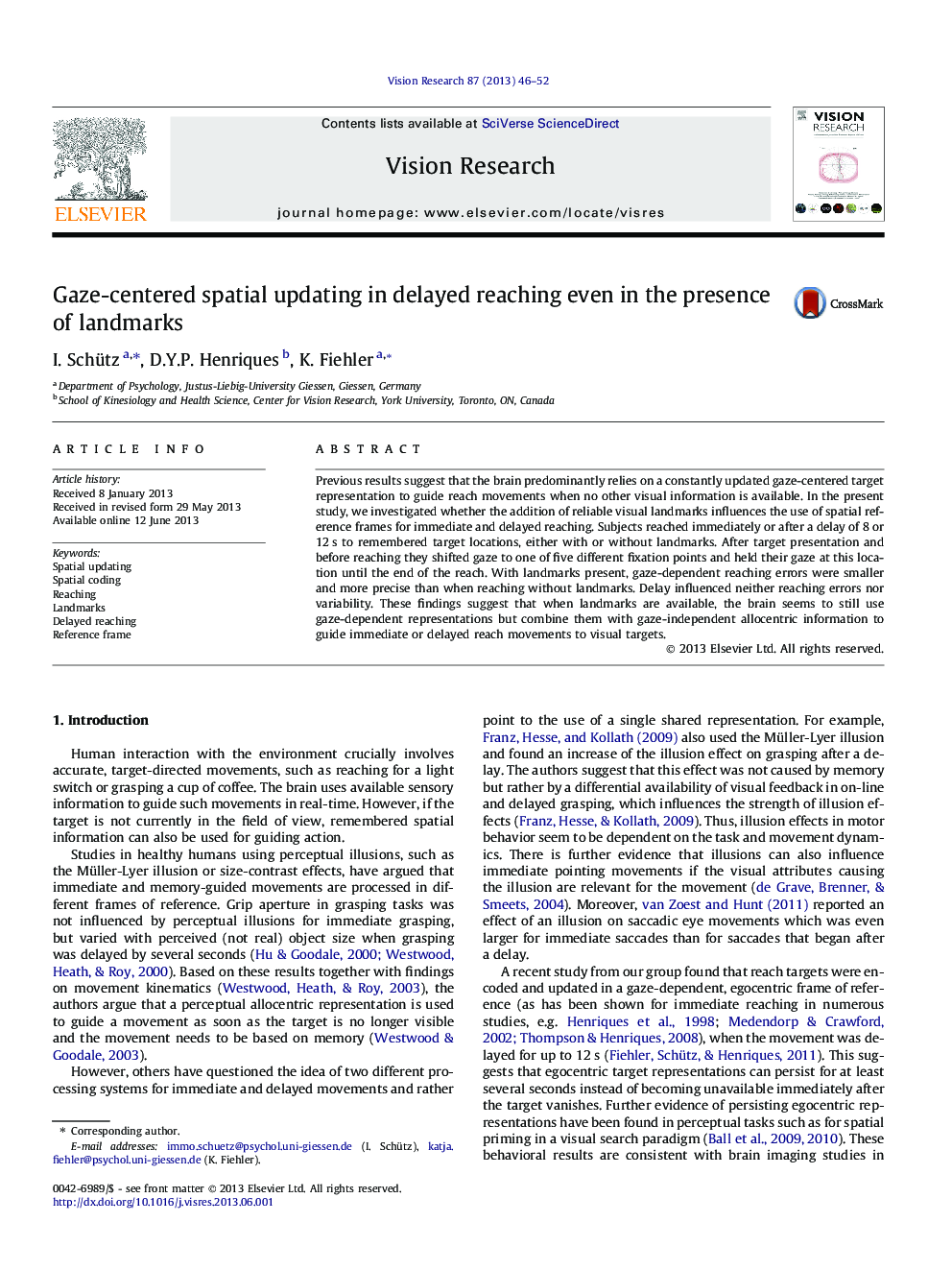| Article ID | Journal | Published Year | Pages | File Type |
|---|---|---|---|---|
| 6203611 | Vision Research | 2013 | 7 Pages |
â¢With landmarks present, reach targets are still coded and updated relative to gaze.â¢Gaze-dependent coding is found in both immediate and delayed reaching.â¢Reach errors with landmarks are less strongly influenced by gaze direction.â¢Variable errors are reduced when landmarks are available and unaffected by delay.â¢Our findings suggest a combined use of egocentric and allocentric information.
Previous results suggest that the brain predominantly relies on a constantly updated gaze-centered target representation to guide reach movements when no other visual information is available. In the present study, we investigated whether the addition of reliable visual landmarks influences the use of spatial reference frames for immediate and delayed reaching. Subjects reached immediately or after a delay of 8 or 12Â s to remembered target locations, either with or without landmarks. After target presentation and before reaching they shifted gaze to one of five different fixation points and held their gaze at this location until the end of the reach. With landmarks present, gaze-dependent reaching errors were smaller and more precise than when reaching without landmarks. Delay influenced neither reaching errors nor variability. These findings suggest that when landmarks are available, the brain seems to still use gaze-dependent representations but combine them with gaze-independent allocentric information to guide immediate or delayed reach movements to visual targets.
